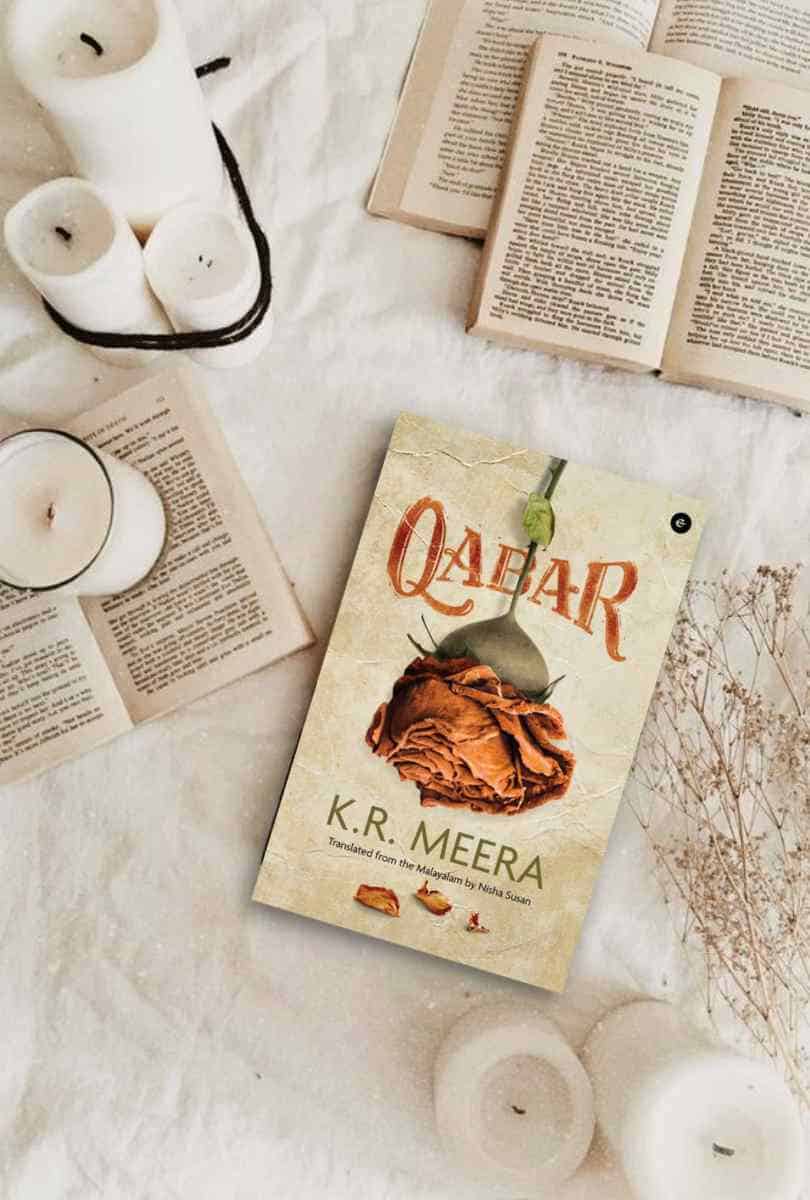PLOT: 4/5 CHARACTERS: 3.5/5 CLIMAX: 4/5 WRITING STYLE: 4/5 ENTERTAINMENT QUOTIENT: 4/5
Originally written in Malayalam and translated to English by Nisha Susan, Qabar is a one-of-a-kind reading experience.
Phenomenal and evocative, this novel thrives through subtlety in a state of multiple paradoxes. This is particularly true of the constant tussle in the novel between the real and the imaginary. Deeply rooted in contemporary Indian society, the novel is set in Kerala and abounds in the frequent references to iridescent myths of the only man who returned alive from Kashi and the levitating twins.
Partly fact though largely fiction, the novel seamlessly ties loose ends together to create a spellbinding reading experience regarding the essence of being human, which lies in the ability to transcend personal and professional biases to bond with fellow humans on an individual level for the sake of humanity.
Yet, it is living out this humane side that comes with its own set of challenges as noted in the character of Bhavna who is a judge in a court in Kerala. She is a single mother as she has had to separate from her narcissistic husband and her only child, her son, has ADHD.
Her life is suddenly turned upside down with the disclosing of a case that surrounds a property dispute where new construction is proposed to start on a plot that houses a grave.
While this is the central issue of the case in the novel, the judge’s life is turned upside down when the legal dispute becomes a personal upheaval, creating emotional turmoil in the heart of the protagonist, as the person who petitions to disallow any construction on the site is a mind reader and practitioner of sorcery.
Yet, Bhavna falls for him with a thud, despite being overwhelmed by his presence, stealing glances at him, and being extremely cautious of his ways. What follows is a case of the dichotomy between the political and personal that creates an intellectual and emotional plot line that does not leave any stone unturned in engaging the senses of the reader to create two parallel worlds where the natural and the supernatural meet.
It is at the point of meeting that all energies collide and create a fantastical and phantasmagorical ambiance that is unbelievable yet unputdownable at the same time.
Be it the myth of the twins whose feet don’t touch the ground or Bhavna’s own sorrowful birth story in which she survived but her twin didn’t, it showcases why life is understood as a cycle of seasons which brings happiness and sorrow but more importantly, repeats itself over and over again in different forms.
This connects the history of ancestors to the present time of Bhavna who becomes the archetype of any individual whose present, past, and future coalesce to create the story of their role in this life. This makes the plot of the book resonate with readers on several levels and not just unidirectional or straightforward.
The writing style in Qabar is terse, sententious, and lucid. There is apt usage of vocabulary if not soul-stirring sentences that reveal observations about life and living this life which are simply mind-boggling.
Punctuated by the anxiety of being misunderstood versus misrepresented, the novel leaves a lot of things open-ended and provides space for the reader to deduce and interpret.
It is this openness that tampers with the flow of the plot, which goes to and fro between the past and present to create a vision of the future that is based on the actions and deeds of the present.
Despite keeping the timer of accountability, responsibility, and decisiveness ticking, there is the humane side of Bhavna who cannot help but fall for the mysterious plaintiff named Kaakkasseri Khayaluddin Thangal. What flows through this acquaintance is nothing but heart-warming revelations that only go on to show how individuals are more similar than different, regardless of their socio-historical backgrounds.
Yet, there is a lot of pain in Qabar which includes the pain of love, separation and just living as individuals who are aware of themselves and their surroundings. However, living is coming to terms with this pain that Bhavna learns in a rather hard way, though it is easier said than done.
Another important aspect of this novel is the issue of the supernatural or sorcery which is considered an art form that requires a lot of devotion and mental strength as noted in the line: “There is no training in sorcery. Only devotion.”
As an art form, the novel elaborates on the process of exchange that is essential in sorcery. It is considered nothing but an exchange of emotions that is akin to the emotionally surcharged environment of the novel which creates a powerful impact.
However, Qabar is only about 110 pages long and makes for a quick read. The book cover alludes to the Edwardian roses that find ample mention in the plot but the rotten and dried upside-down rose on the cover shows the condition of love in the plot which is difficult to fathom, much more powerful than infatuation and a beautiful emotional transaction.
The novel is an engrossing read and suitable for intermediate and advanced-level readers, lovers of magic realism, or courtroom fiction.
Cannot wait to read it? Buy your copy of Qabar using the link below.
